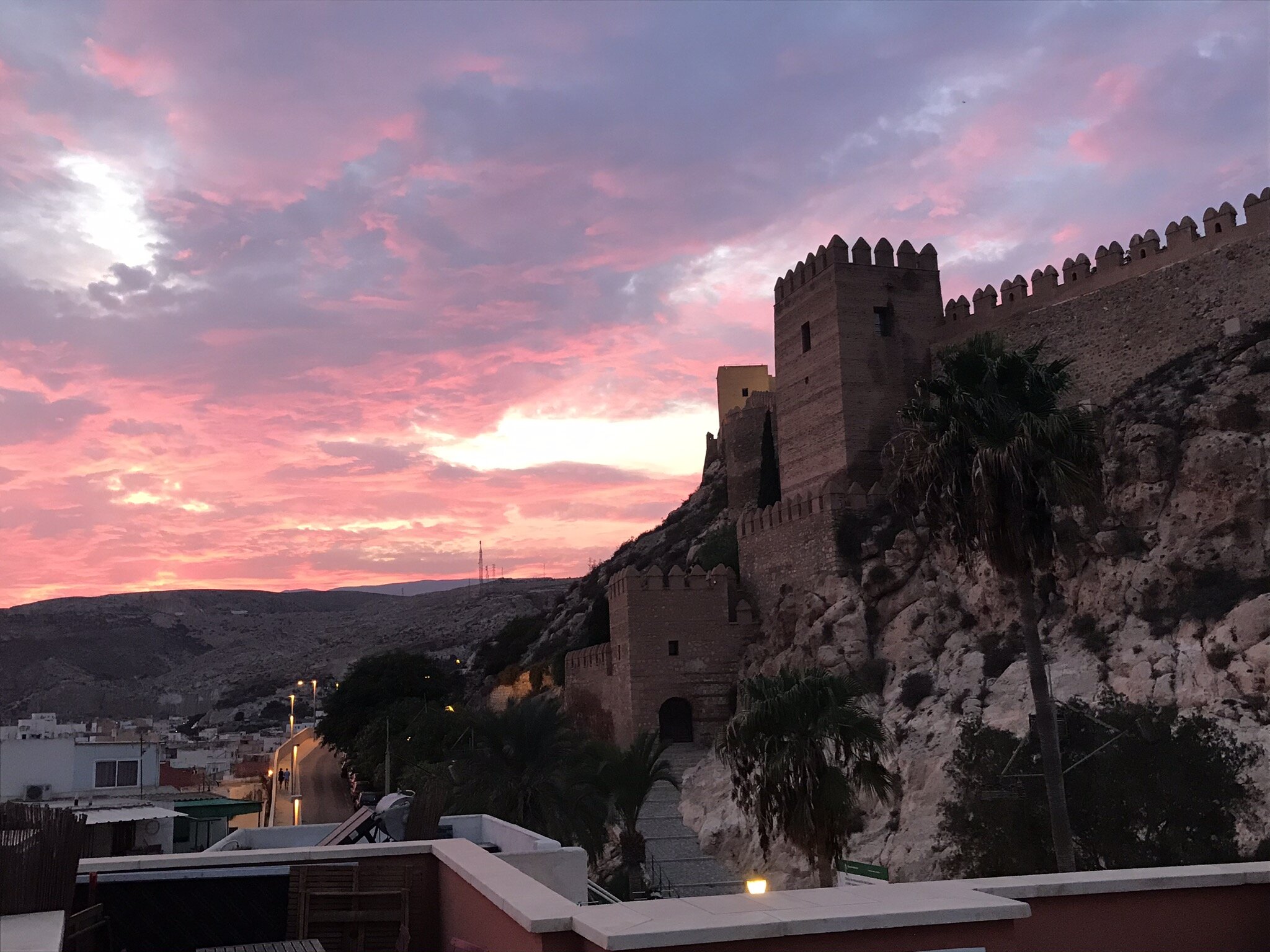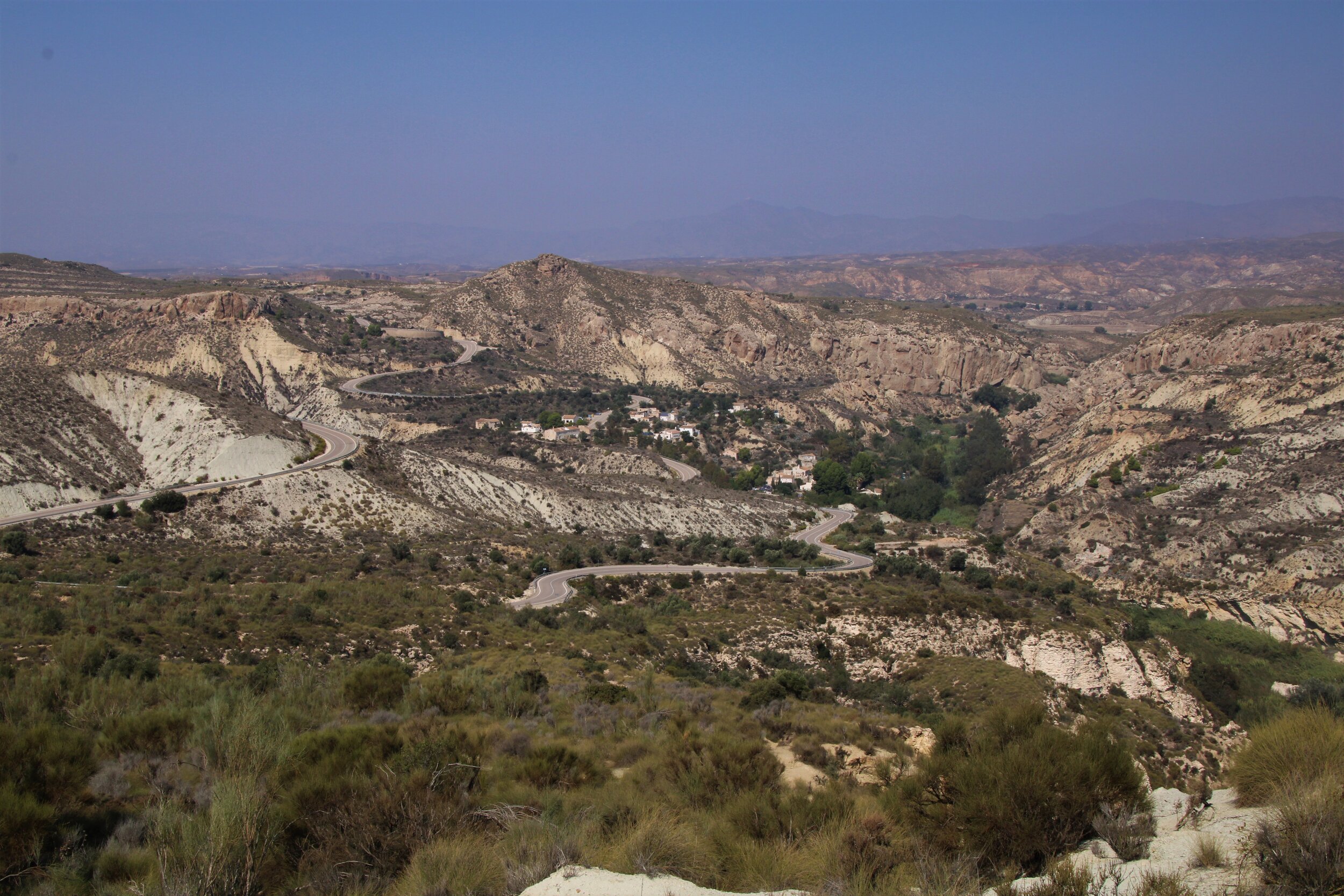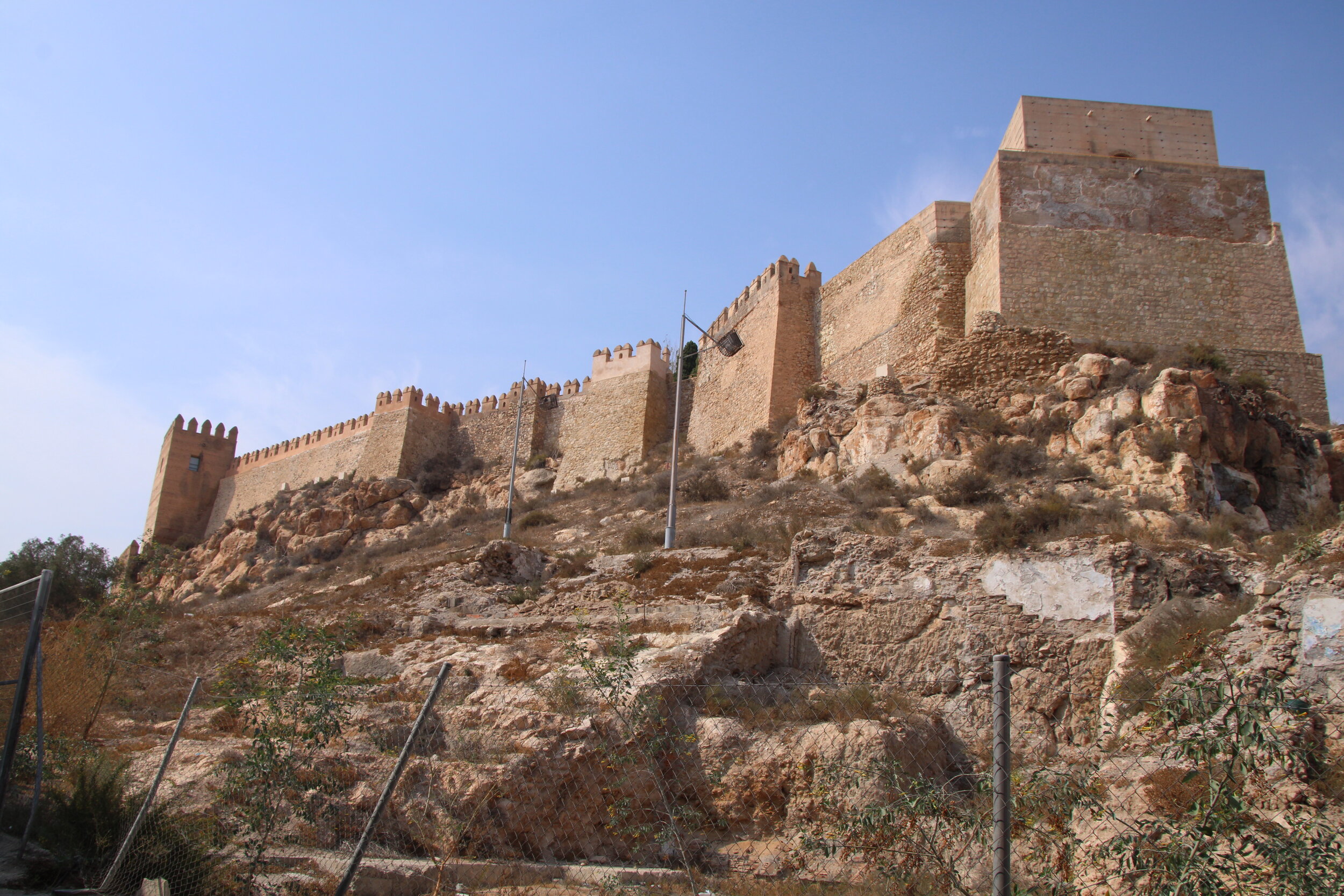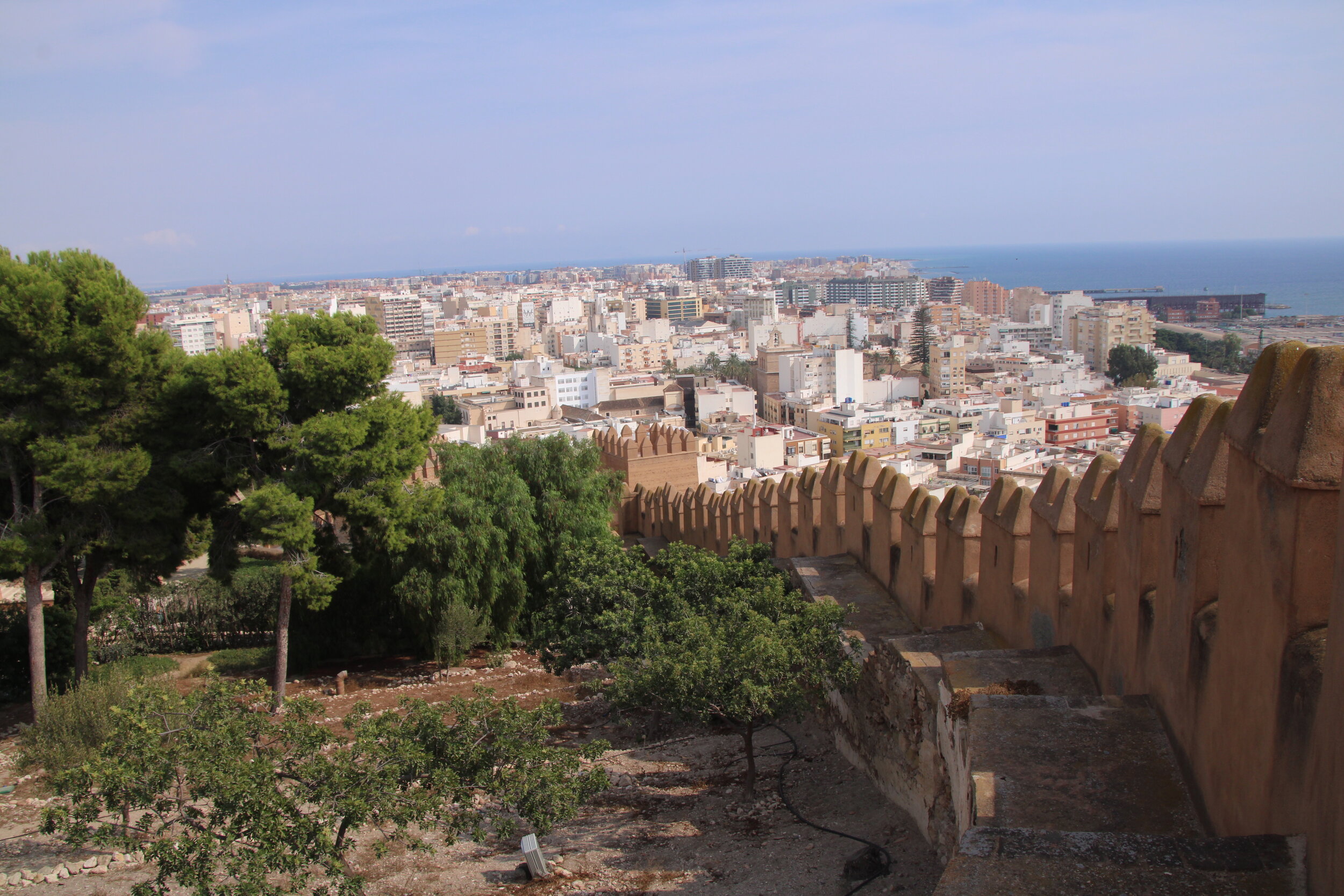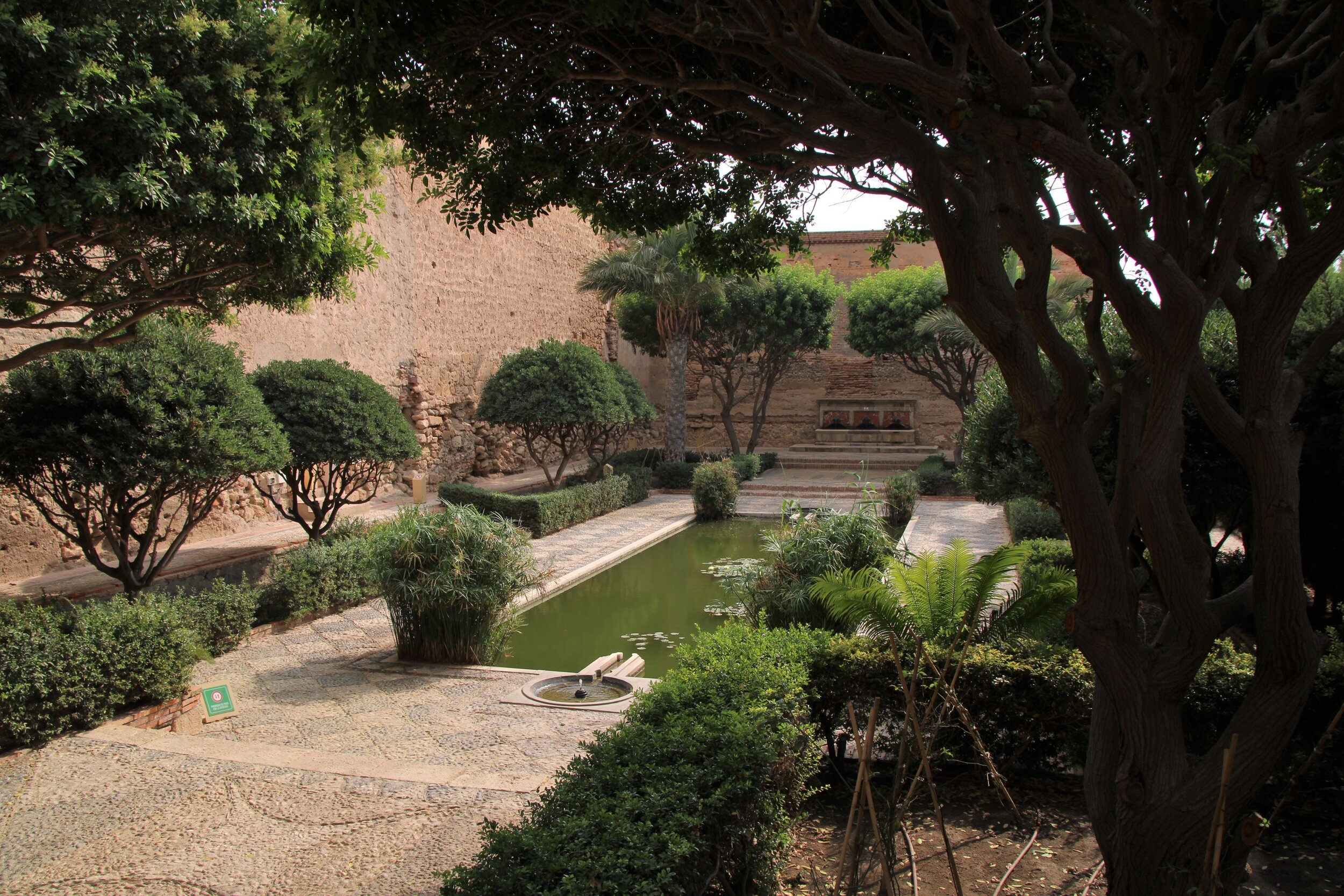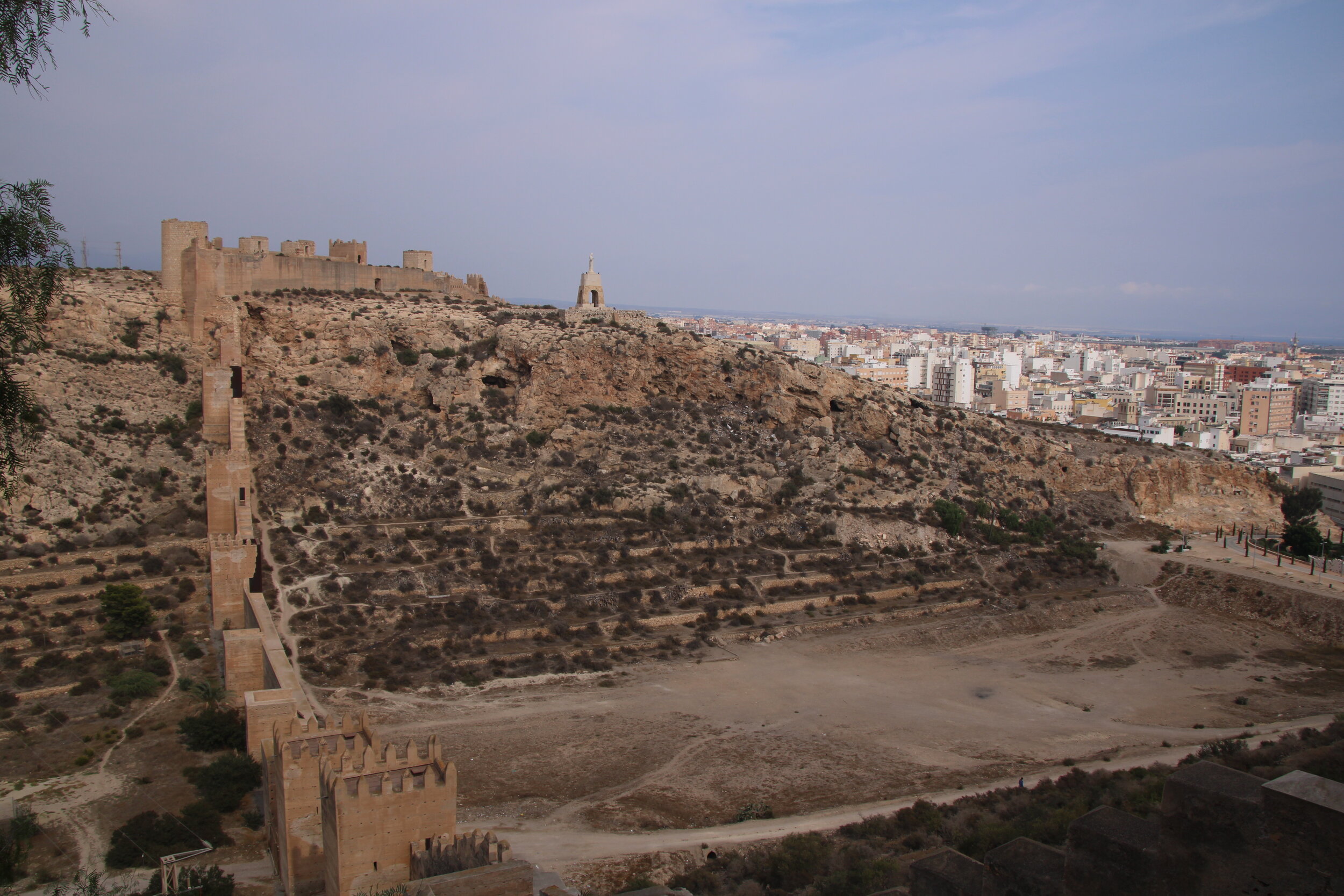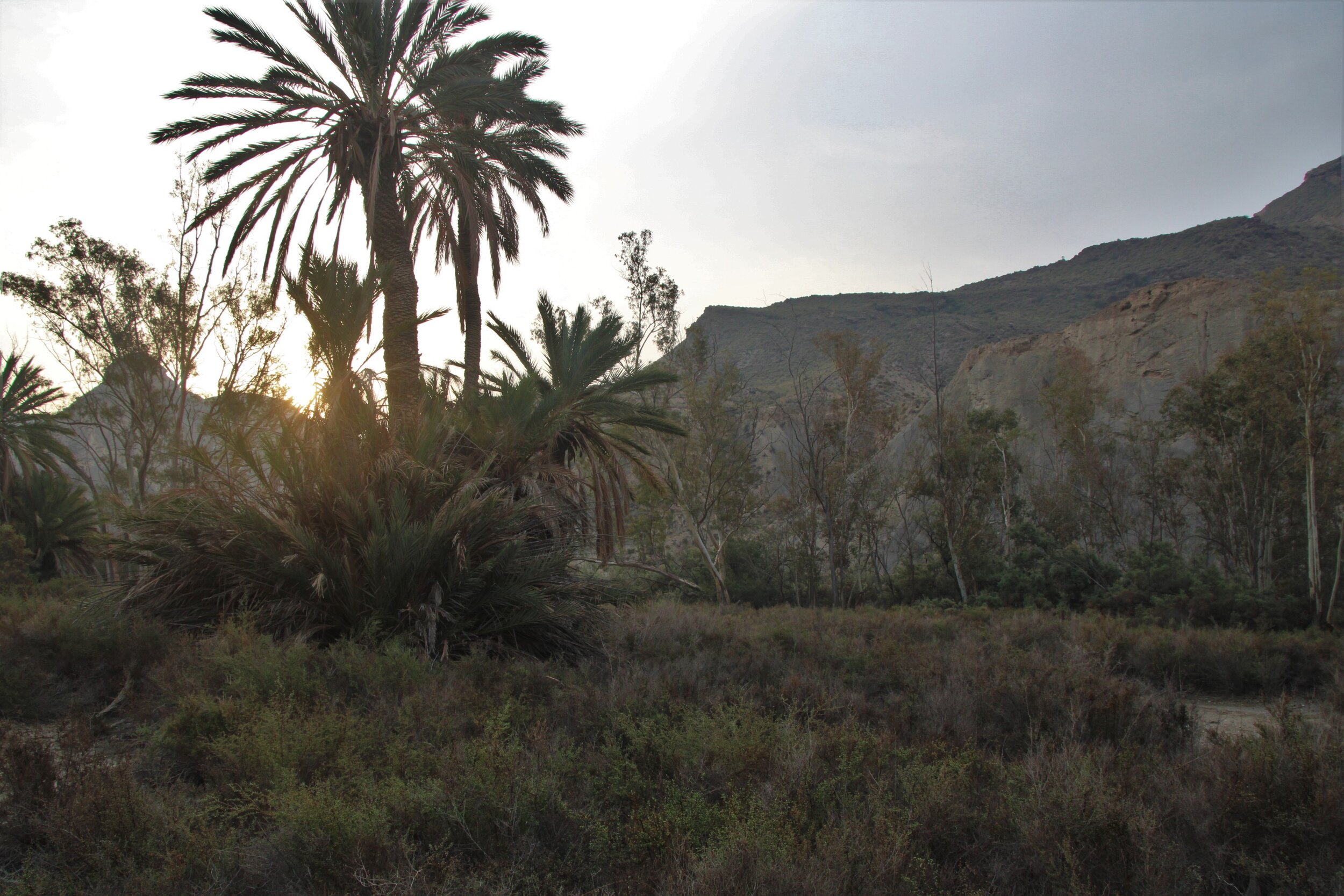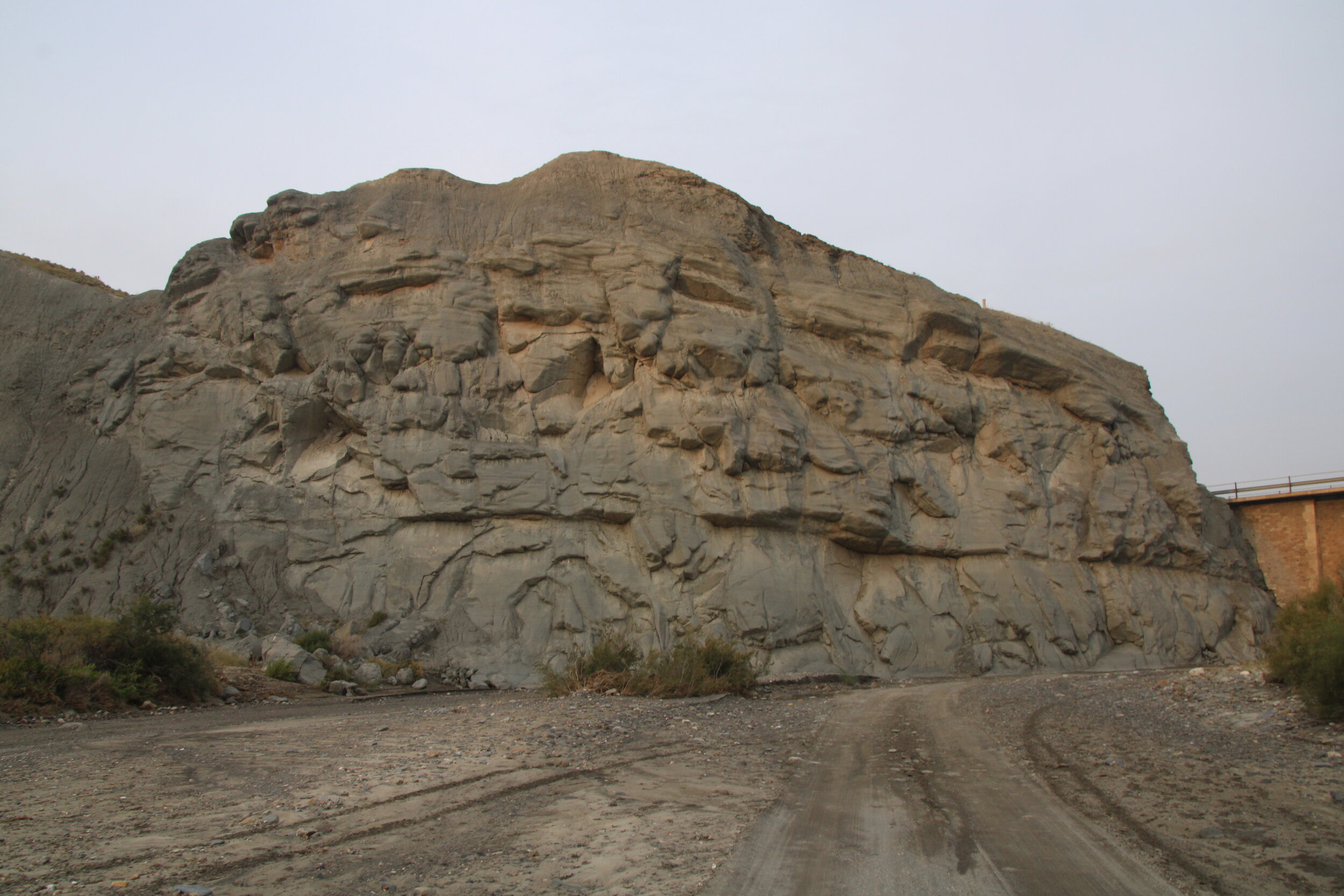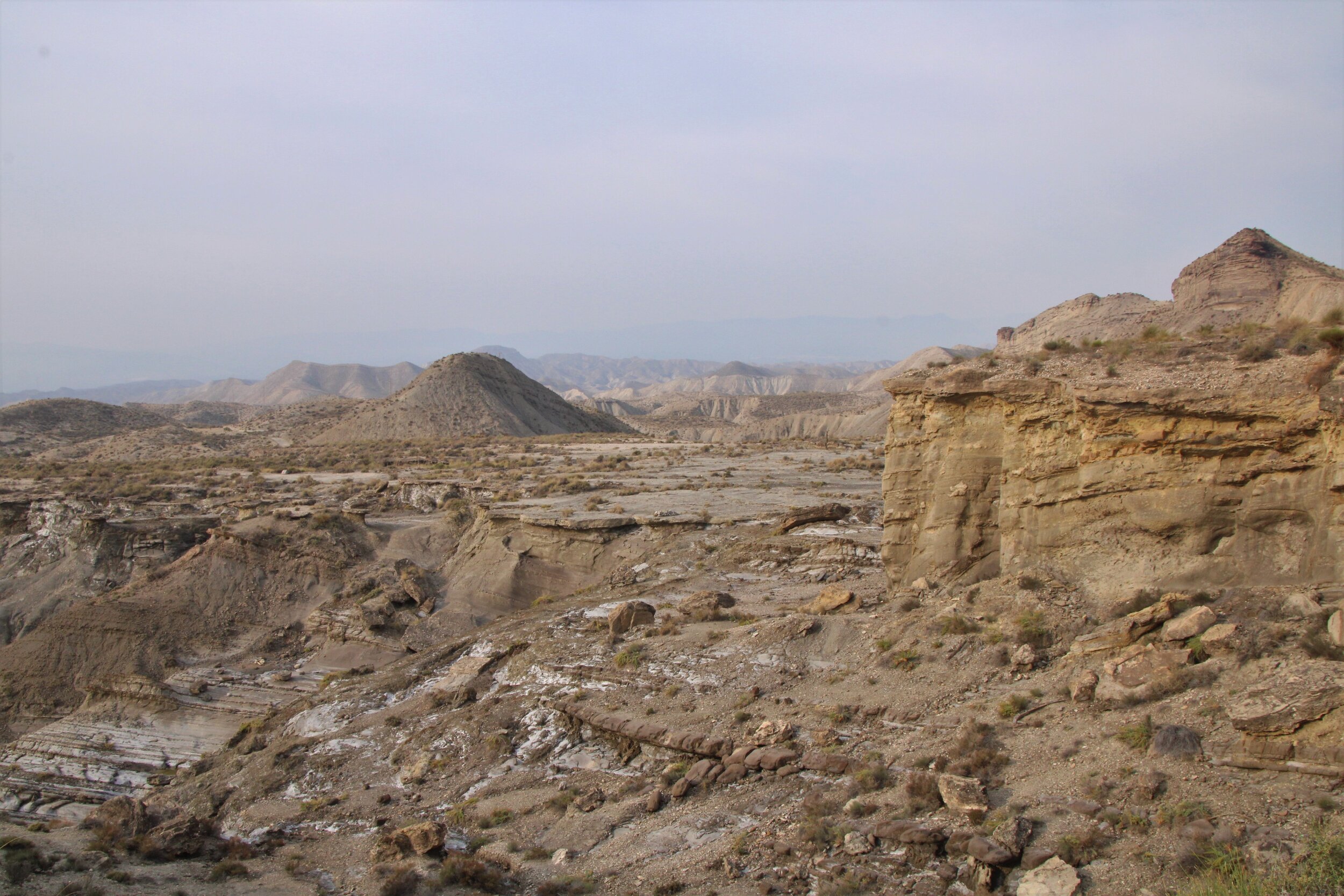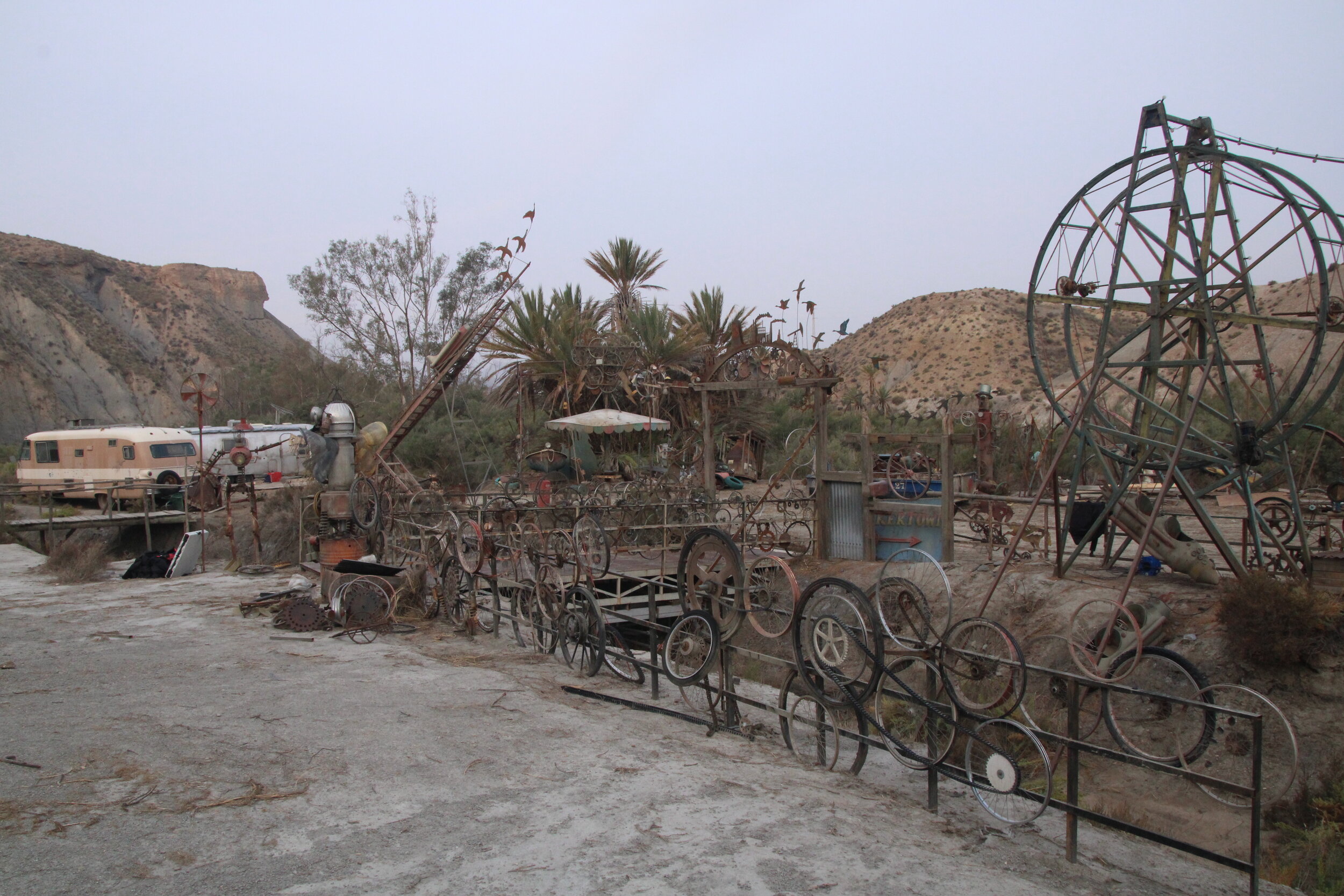The beauty of southern Spain is comprised of many things which I love dearly. Chief among these delights were those moments of sublimity when ordinary life seems reflected back at one’s eyes in the extraordinary nature of present circumstances. Take someone far enough outside of what they see everyday, and it can be far too much for the senses, while just before that there is a magical place where the stimuli is not too much to overload, but just enough to make one forget work, hunger, or even language differences. It’s a place of wonder. Beyond that there was desert landscape, a rustic tradition of avoiding the heat of the day, extraordinary coastal geology, and artisanal pottery.
Andalusia is a very large part of the country, containing a sizable collection of her most treasured cultural centers, among which could be mentioned Seville, Cordoba, Granada, and Malaga. The hinterlands of Moorish and Arab-speaking Spain a thousand years ago, distinctively Arab and Moroccan influences remain in famous examples of architecture, and the frequented restaurants and bars of the locals. Here the temperatures are the hottest in all of Europe, where in summer it can remain 97 °F even by the middle of the night. Fortunately for Mara and I, we arrived in October when the weather was perfect albeit for strong winds. We arrived in Almeria, a smaller city in the easternmost southward-facing coast of Andalusia that contains the highest population of Muslims in Spain, and is the gateway to Cabo de Gata, a UNESCO Biosphere Reserve that protects an extraordinary series of volcanic and sedimentary coastline features hiding surprisingly empty beaches and sapphire waters.
PICTURED: Classic Andalusian interior landscape.
Having arrived incredibly early, we drove from Malaga to Almeria through an arid landscape reminiscent of parts of interior and coastal California. Tall palms lined the roads, while short ones covered the scrubby beige and red desert. One of the principal things we noticed on the road, in town, on the beaches, and pretty much everywhere we went was a distinct lack of people. I was all at once made to recall stories I heard as a younger man watching Top Gear, about the financial collapse of 2011-2012, which brought unemployment in Spain as high as 25% following the collapse of the real estate, construction, lending, and banking sectors, in that order. While it wasn’t the high season for tourism, I would later come to discover that the temperatures were much more tolerable than in the summer, and the water on the beaches was warm to enough to surprise me with their emptiness. Another surprise was the almost Chinese-nature of the identicality of the housing, with lines of small white Spanish box houses with their wind-catching chimneys and turreted-features appearing more like city walls than neighborhoods from a distance.
Suddenly coming down from a tunnel we saw the main drag of Almeria laden with palms, and crowned on the hill was a magnificent Alcazar dating to when the city grew rich under Maghreb rule when the luxury textile trade flourished in the ports which still today boast as being the “Frontier of Africa”. Unlike western castles and fortresses, the Alcazabar of Almeria undulated and moved with the landscape rather than sitting atop it like a rock. Arriving there on foot, we were told amid no other visitors that entry was free, astonishingly enough. From its walls we received an excellent view of the old city center, and explored the beautiful gardens within in relative peace and quiet. The city around was filled with quaint colored houses, which, from below, looked relatively similar, but when viewed from above practically glittered with individuality as everyone had converted their rooftop in the rain-less city into some useful facility like a gym, a concert venue, greenhouse, or terrace with a table, chairs, kitchen and barbeque for hosting guests.
Andalusia is the site of the only true desert, as recognized by whoever makes that decision, in the entire European continent: The Tabernas. As well as being the site of gorgeous, if a little perverted by through roads, desert scenery, it’s also been the location for a variety of large and small budget films and television settings, including scenes from the Kingdom of Dorne, in Game of Thrones, Lawrence of Arabia, and a number of spaghetti westerns. I was surprised to see they were still being referred to as spaghetti westerns even though they were in Spain and not Italy. Abandoned film sets, or simply the remains of extreme rural living, dotted a deeply eroded sedimentary landscape of sandstone, compressed earth, quartz, and salt deposits. I loved that what in America we would call a “wash” or an “arroyo,” is instead in Spain called a “Rambla”. I explained to Mara that “to ramble” means to travel about the countryside with no particular direction in mind, and being that washes wind through the desert and make travel easy, they by their nature make you ramble, as you must follow their course or resort to rock-climbing, and bushwhacking.
At one point in order to continue on the trail we had to walk around an active film set for some remarkable Mad Max looking production that involved a desert squatter’s camp with brilliantly-made sets of buildings, tents, and totems made entirely from old vehicle and bicycle parts. After we left that, we walked through an oasis that played host to Lawrence and his raiders from Lawrence of Arabia, at the very moment the sun rose above the hills in the distance. Magical.
